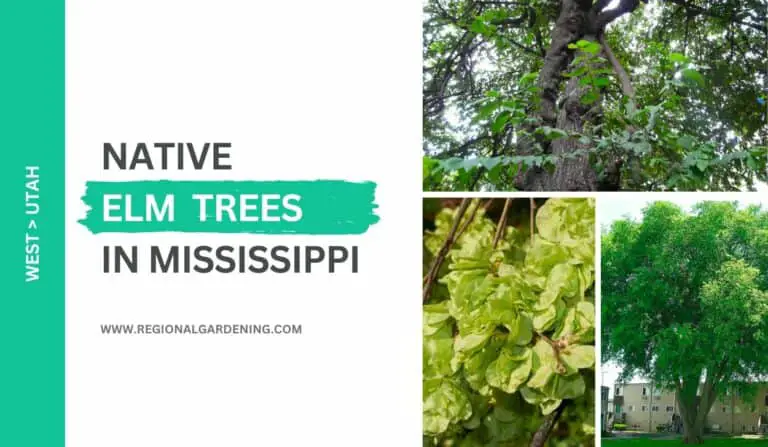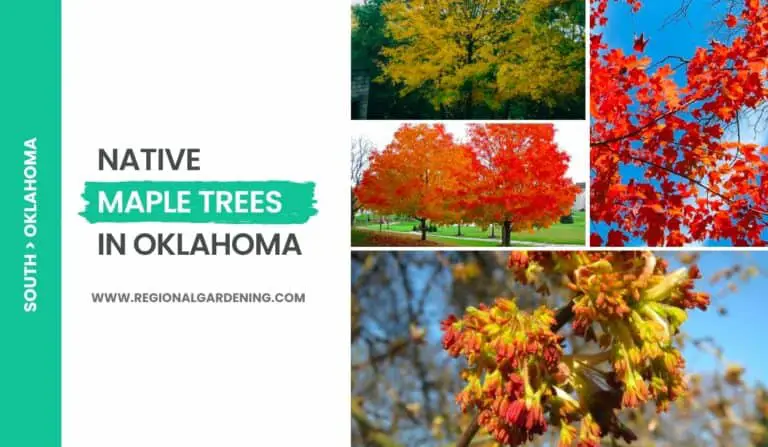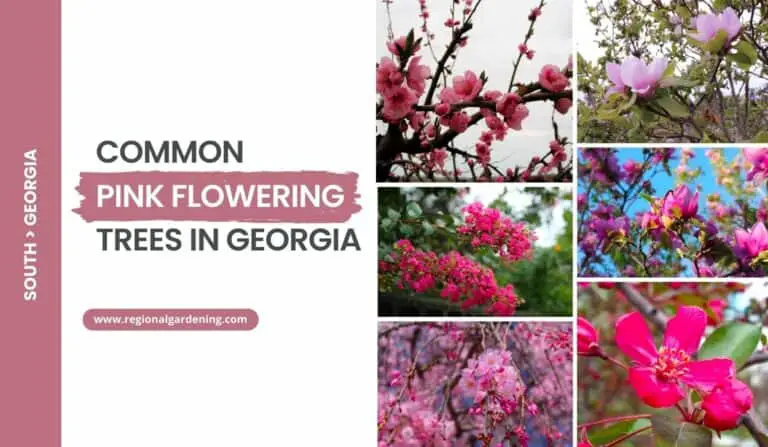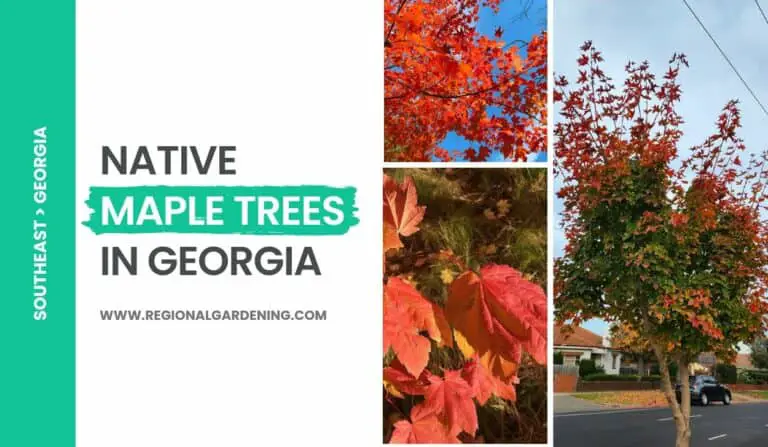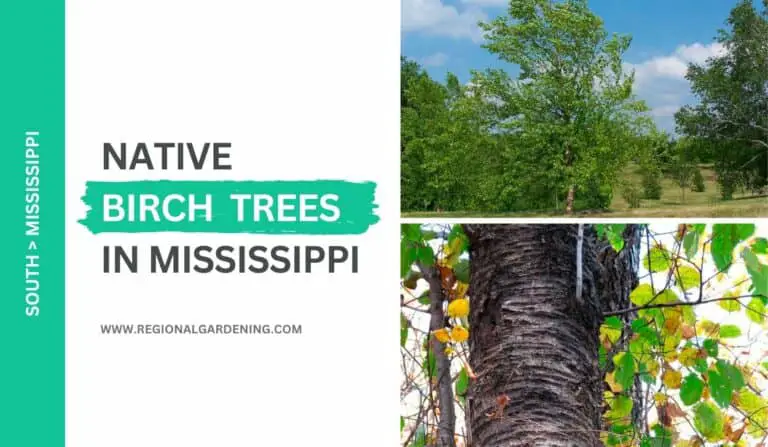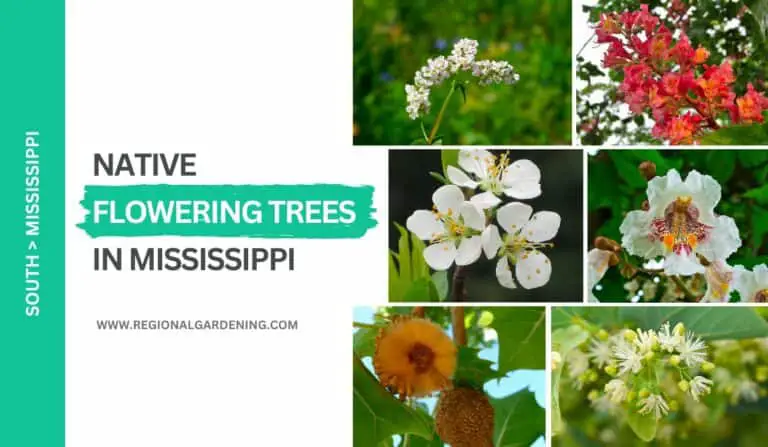3 Native Ash Trees In Kentucky (Photos & Details)
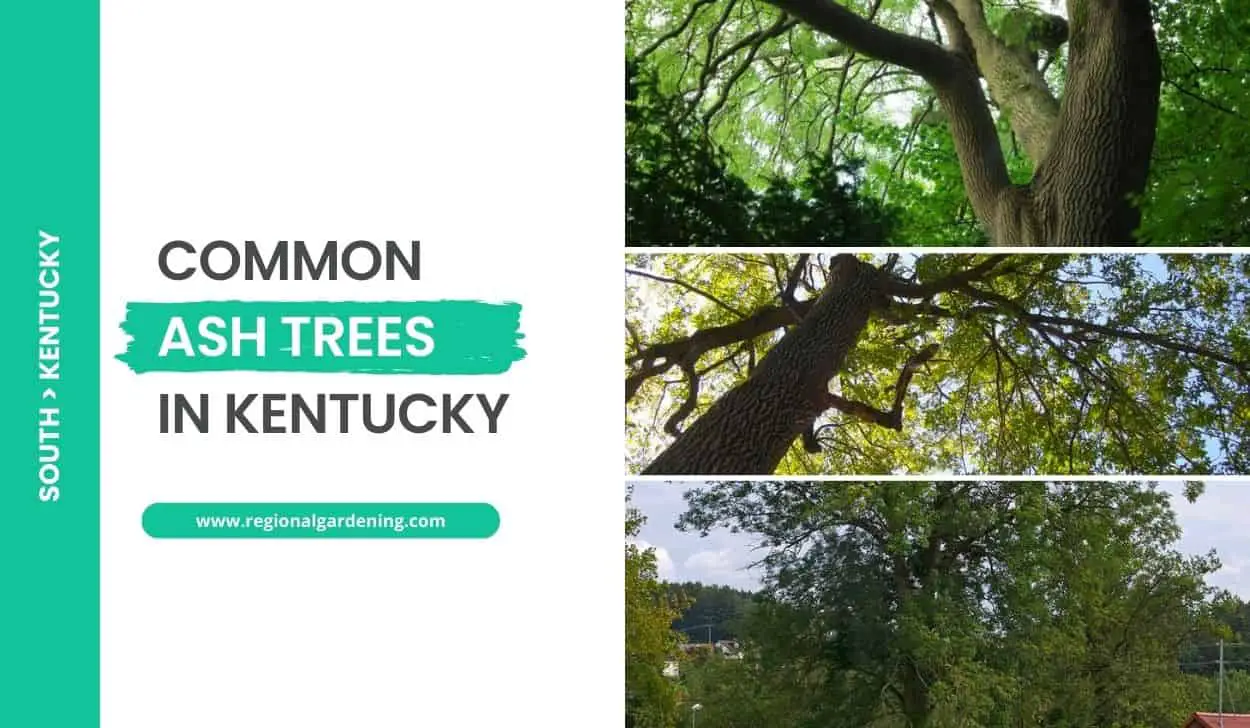
We usually think of olives and their trees when we think of plant families. But did you know that the ash tree is a lesser-known member of the olive family? The olive family is quite large, with approximately 30 groups and over 400 different plants. The ash tree is only one member of this family.
There are approximately 70 different types of ash trees, with the majority of them growing in the Northern Hemisphere. In North America, there are 16 kinds, and Kentucky has two of them.
In this article, we’re going to talk about these ash trees in Kentucky. We will learn about the native ash trees that grow naturally here in the state. We will learn what makes each one unique and why they are ideal for our state’s landscapes.
Let’s get started.
1. Blue Ash
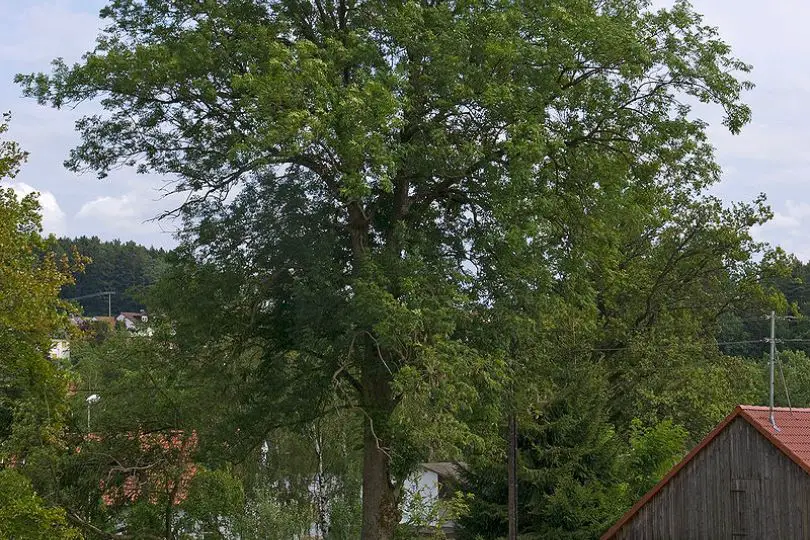
- Scientific Name: Fraxinus quadrangulata
- Common Name(s): Blue Ash
- Mature Height: 50 to 70 feet
- Native Region: Michigan to Arkansas and Tennessee, including all of Kentucky, particularly the inner Bluegrass region
- Flowers: Tiny, purple, petal-less flowers that hang in loose panicles
- Fruit: Winged samaras, 1 to 2 inches long, hanging in clusters, falling from the tree in autumn
- Uses: Blue ash was historically used as a source of blue dye due to the gelatinous substance on its inner bark that turns blue when exposed to air. It is primarily grown as an ornamental shade tree in Kentucky gardens.
Blue Ash (Fraxinus quadrangulata) is a striking natural tree found in Kentucky’s wide fields, pastures, and limestone soil regions such as the Bluegrass region and along the Kentucky River palisades.
With an erect oval to rounded crown and spreading branches on a straight, slender trunk, this huge tree grows to a height of 50 to 70 feet. Its enormous, 7 to 14-inch leaves are divided into two rows of 2- to 5-inch, coarsely serrated leaflets that seem dark green in summer and fade to pale yellow in autumn.
Blue ash has tiny, lovely purple, petal-less blooms in loose panicles in the spring, adding to its ornamental value. The bisexual flowers bloom when the leaves emerge, and the tree later produces winged samaras, 1 to 2 inches long, hanging in clusters and falling from the tree over several weeks in autumn.
Blue ash grows on limestone outcrops and is especially well-suited for Kentucky’s inner Bluegrass region. It is native to a large territory stretching from Michigan to Arkansas and Tennessee.
It is a highland species found in ancient pastures alongside bur oak. Historically, blue ash’s gelatinous inner bark material, which turns blue when exposed to air, was utilized as a source of blue dye, giving the tree its name.
Blue ash is a low-maintenance plant that thrives in full sun on rich, wet, well-drained soils. It tolerates limestone soils and dryness well, making it ideal for urban areas. However, pests such as the lilac borer, ash borer, and fall webworm pose a threat to blue ash.
Furthermore, the emerald ash borer (EAB) has become a severe concern in Kentucky, necessitating homeowners to take precautions if they choose blue ash for their landscape. Despite these obstacles, blue ash is an important and neglected native tree in Kentucky gardens, valued for its distinct traits and historical significance.
2. Green Ash
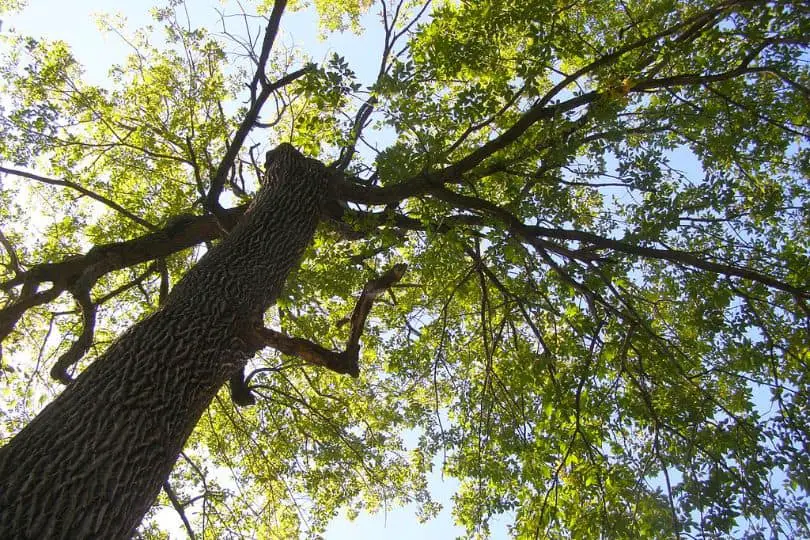
- Scientific Name: Fraxinus pennsylvanica
- Common Name(s): Green Ash
- Mature Height: 50 to 60 feet tall
- Native Region: Nova Scotia to Manitoba, south to Texas and northern Florida
- Flowers: Clusters of small male and female flowers bloom on separate plants before leaf; female trees produce tan, single-winged seeds.
- Fruit: Tan, single-winged seeds
- Uses: Wood used for baseball bats, tennis rackets, tool handles, oars, and picture frames
Green Ash (Fraxinus pennsylvanica) is a fast-growing tree that achieves maturity heights of 50 to 60 feet and a spread of roughly half that height. Because this species is resilient and can withstand a wide range of growth circumstances, it is a popular choice for planting.
Green ash compound leaves are huge, reaching up to 12 inches in length and containing five to nine leaflets. The leaves are a medium to dark green tint that becomes golden in the fall, adding a splash of color to Kentucky landscapes.
Green ash grows primarily in damp bottomlands from Nova Scotia to Manitoba, south to Texas, and northern Florida. In its early years, it has a pyramidal tendency that becomes more oval with age. Before leafing out, the tree produces clusters of miniature male and female blooms on different plants, with female trees yielding tan, single-winged seeds.
Green ash in Kentucky requires full light for the best growth. It is important to note, however, that female trees generate invasive and weedy seedlings. Planting male cultivars to eliminate seed production is indicated to address this issue.
Pruning young green ash trees is critical to avoiding structural issues, and corrective pruning may be required to repair wind and ice damage caused by the tree’s brittle wood.
Despite its flexibility, green ash is vulnerable to pests such as lilac borers, scale insects, and the emerald ash borer (EAB). Potential issues include ash yellows, leaf spots, cankers, ash blossom gall, and fall webworms. Unless homeowners have plans for preventative measures, the existence of EAB in Kentucky needs careful consideration before planting green ash.
Green ash also has commercial applications, with its wood used to make baseball bats, tennis rackets, tool handles, oars, and picture frames. It retains its visual appeal throughout the winter, with sturdy, lustrous gray twigs bearing conspicuous, hairy, dark brown pointed buds at their tips.
Even in the colder months, the combination of black buds and ash-gray bark with a braided pattern makes this tree extremely appealing.
3. White Ash
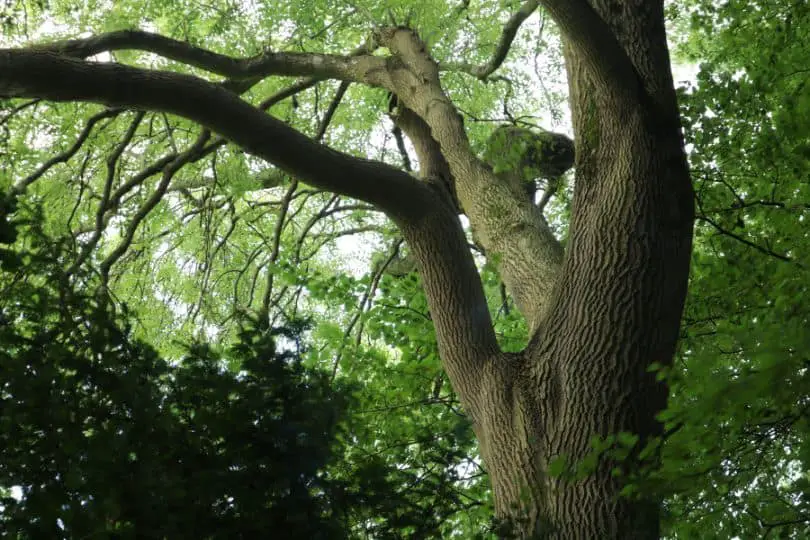
- Scientific Name: Fraxinus americana
- Common Name(s): White Ash
- Mature Height: 50 to 80 feet, can reach 120 feet tall
- Native Region: Nova Scotia to Minnesota, south to Texas and Florida
- Flowers: Clusters of small male and female flowers bloom on separate plants before leafout.
- Fruit: Tan, 1- to 2-inch-long samara.
- Uses: White Ash wood is used for baseball bats, tool handles, furniture, and veneer. It is also valued for sports equipment and church pews due to its strength and resilience.
White Ash (Fraxinus americana) is a well-known and often planted tree in Kentucky gardens. During the summer, its wide, airy leaves provide plenty of shade, and in the winter, it transforms into a stunning display of ash-gray bark and intriguing dark buds.
This ash tree has the most spectacular fall colors of any ash species, changing from dark green to yellow and/or deep purple and maroon. White ash has huge leaves that range in length from 8 to 15 inches and have five to nine leaflets.
White ash is native to areas ranging from Nova Scotia to Minnesota, and from Texas to Florida. It grows erect in its youth before maturing into an open and rounded shape with age. It towers up to 120 feet and reaches a height of 50 to 80 feet. Before the leaves develop, the tree produces clusters of miniature male and female flowers on different plants, and its fruits are tan, 1- to 2-inch-long samaras.
White ash is often found in wooded settings in Kentucky and is valued for its sturdy wood, which is used in various applications including baseball bats, tool handles, furniture, veneer, and sports equipment.
It is popular in urban areas due to its attractive properties, casting light shade that allows grass to grow underneath. Although it can take a variety of moderate circumstances, white ash prefers full sun and thrives in deep, wet, well-drained soil.
However, the emerald ash borer (EAB), a destructive pest that has become a severe problem in the state, is posing a threat to white ash in Kentucky. Homeowners who want to grow white ash should have a plan in place for treating trees with EAB prevention methods.
Additionally, female white ash trees release winged seeds, which can become invasive and weedy. Planting male cultivars that do not generate seeds is recommended to avoid this problem.
Common Ash Trees In Kentucky – Frequently Asked Questions (FAQs)
Let’s go through some of the most frequently asked questions about ash trees in Kentucky.
Are there any ash trees in Kentucky?
Yes, ash trees do grow in Kentucky. White ash (Fraxinus americana) and green ash (Fraxinus pennsylvanica) are the most common ash tree species in the state. Ash trees are common throughout North America and are valued for their strong and durable wood. They are frequently used in the manufacture of furniture, flooring, and sports equipment such as baseball bats and hockey sticks.
However, ash trees in Kentucky and other parts of North America have been threatened in recent years by the emerald ash borer, an invasive beetle that infests and kills ash trees. To preserve the ash tree population in Kentucky and other affected areas, efforts are being made to manage and mitigate the impact of this destructive pest.
Is growing ash trees in Kentucky gardens a good idea?
Due to the threat of the emerald ash borer, an invasive pest that has severely impacted ash tree populations across North America, including Kentucky, growing ash trees in Kentucky gardens may not be the best idea.
Because the emerald ash borer has the potential to infest and kill valuable ash trees, planting them in gardens or landscapes raises the risk of infestation. As a result, many arborists and horticulturists advise against planting new ash trees, particularly in areas where the emerald ash borer is prevalent. Instead, consider planting other tree species that are resistant to this destructive pest, ensuring the long-term health and vitality of the garden ecosystem.
What are the commercial uses of ash trees in Kentucky?
Ash trees in Kentucky have a variety of commercial uses, owing to the high quality and versatility of their wood. Because of its strength, shock resistance, and appealing grain patterns, ash lumber is highly valued in the woodworking industry. It is commonly used in the manufacture of furniture, flooring, cabinets, sporting goods such as baseball bats and hockey sticks, tool handles, and even musical instruments. The flexibility and durability of wood make it ideal for these applications.
Furthermore, ash trees are used to make veneer and plywood. However, the presence of the emerald ash borer, an invasive beetle that has devastated ash tree populations in Kentucky and other regions, has had a significant impact on commercial ash tree use. Efforts are being made to manage and mitigate the impact of this pest to preserve the remaining ash resources for commercial purposes.
Similar Articles
- Maple Trees In Kentucky
- Dogwood Trees In Kentucky
- Berry Trees In Kentucky
- Oak Trees In Kentucky
- Hickory Trees In Kentucky
- Cypress Trees In Kentucky
- Pine Trees In Kentucky
- Elm Trees In Kentucky
- Magnolia Trees In Kentucky
- Birch Trees In Kentucky
- Cedar Trees In Kentucky
- Locust Trees In Kentucky
Sources
The Regional Gardening team makes sure that the information in our articles is accurate by only using sources that are known to be trustworthy. Some of these sources are peer-reviewed journals from government agencies, well-known universities, and scientific research organizations.
- Common Kentucky Trees, Department of Forestry & Natural Sources, University of Kentucky
- Native Trees Of Kentucky, Department of Horticulture, University of Kentucky.
- Trees & Shrubs of Kentucky, Book By Mary E. Wharton and Roger W. Barbour, University Press Of Kentucky


